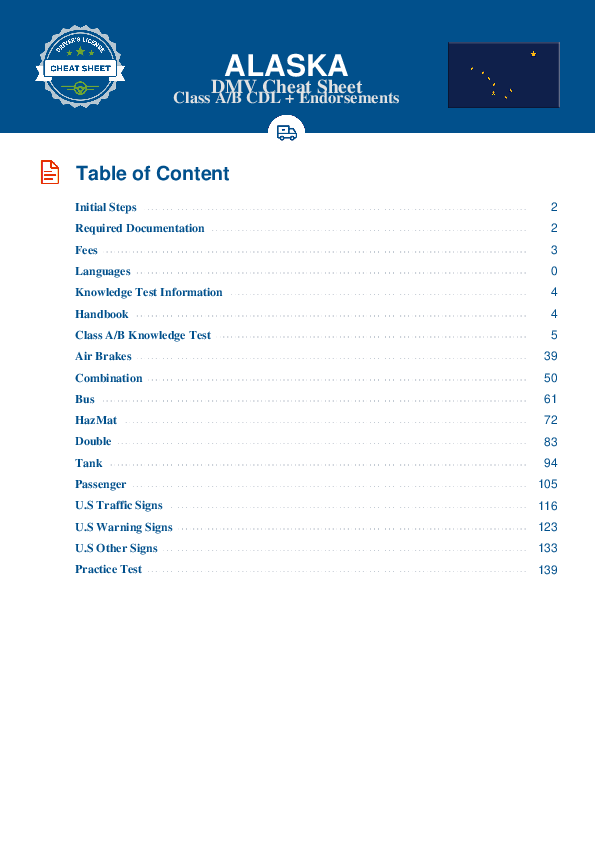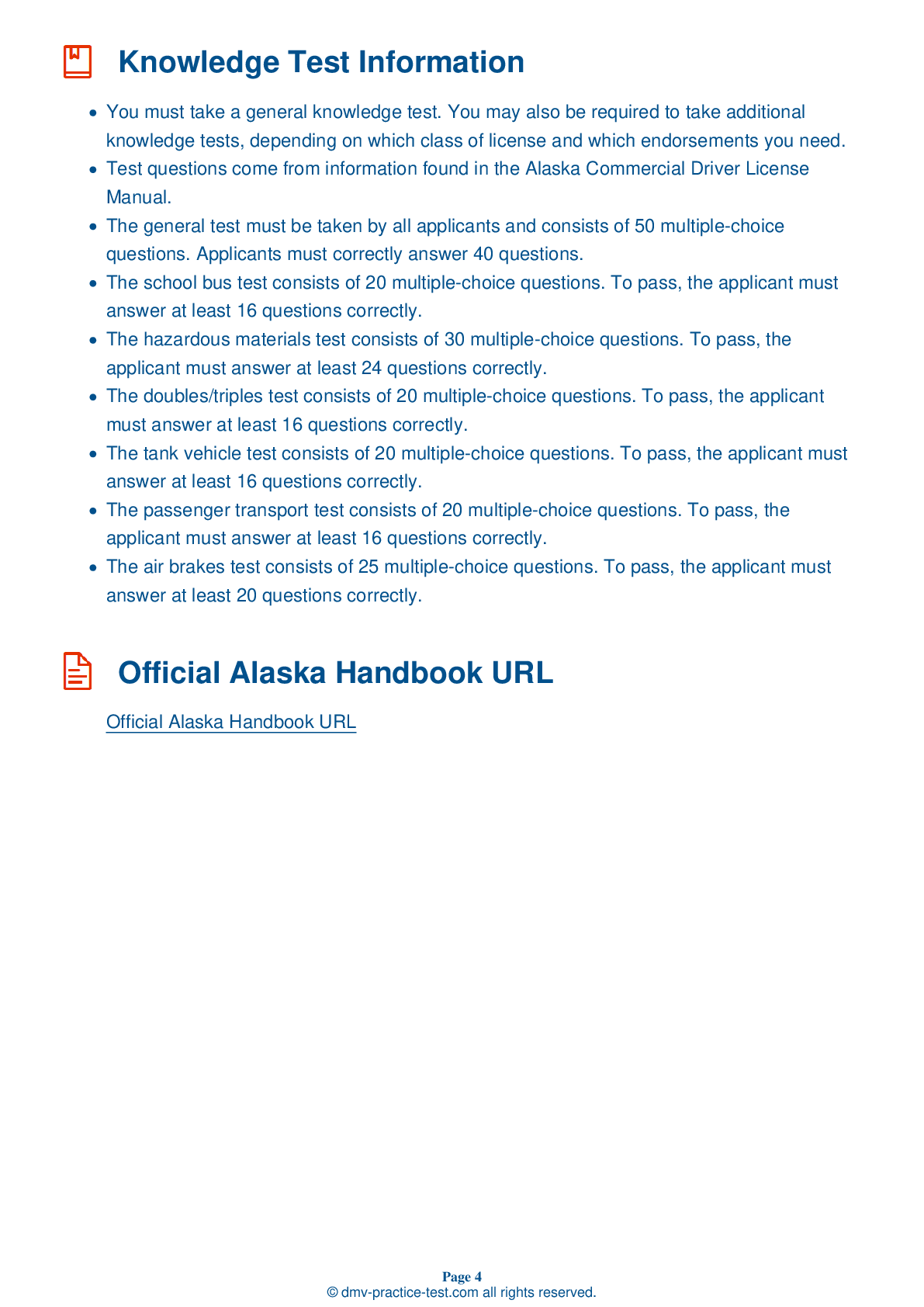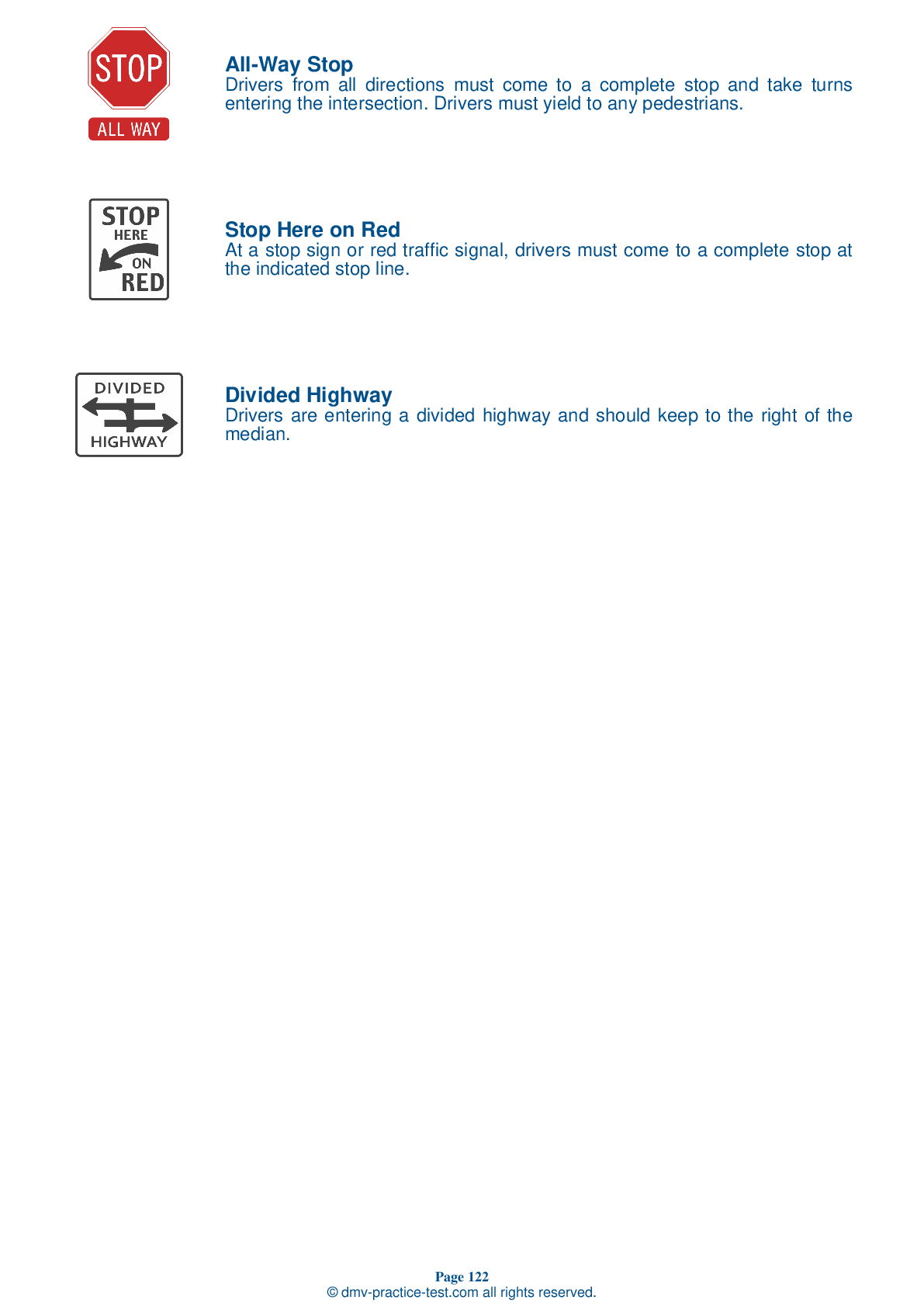Combination Vehicles Practice Test | Alaska 2025 #2
Train for FREE online with our Alaska CDL combination vehicle test. The official exam test consists of several obligatory parts, with all of them checking your knowledge of different blocks of road rules. If you need to obtain a AK combination license in 2025, practice as much as possible. Free sample tests published on our website will help you check and improve your knowledge and boost your grades. Please bear in mind that DMV requirements for issuing a combination license may vary from state to state.
1 . When backing up your tractor while coupling it to a trailer, the trailer brakes should be:
Correctly following the steps to couple and uncouple trailers is vital to safely operating a combination vehicle. Before backing your tractor under the trailer while coupling, make sure your trailer brakes are locked.
2 . What is the tractor protection valve?
A tractor protection valve keeps air in a tractor or truck air brake system should the trailer break away or develop a bad leak. The valve will close automatically if the pressure drops to an unsafe level.
3 . If you are backing and become unsure about your path of travel, you should:
If you are unsure of your path while you are driving in reverse, you should stop, exit the vehicle, and recheck your path of travel.
4 . To prevent a rollover, cargo should be:
Cargo weight should be evenly distributed within a trailer to reduce the risk of a rollover. Do not place too much weight on one side of a trailer.
5 . In a vehicle equipped with an automatic tractor protection valve, the valve will pop out when air pressure drops to a level between:
In vehicles equipped with an automatic tractor protection valve, the valve will pop out if air pressure drops to a level between 20 and 45 psi. When the valve pops out, the protection valve will close, stopping the flow of air.
6 . When connecting a converter dolly to a second trailer, the trailer height should be ____ the center of the fifth wheel.
When connecting a converter dolly to a second or third trailer, the trailer height should correct. It should be slightly lower than the center of the fifth wheel.
7 . Place the trailer air supply control in its "emergency" position to test:
Be sure to test the trailer emergency brakes before beginning a trip. After ensuring that the trailer rolls freely, you can test the emergency brakes by pulling out the trailer air supply control, or placing it in the "emergency" position. Pull forward slightly with the tractor and make sure the trailer does not move.
See the exact questions that will be on the 2025 Alaska DMV exam.
99.2% of people who use the cheat sheet pass the FIRST TIME
Lillian MCcranie explains how our CDL study guide was helpful in passing the exam and recommends it to everyone.
Cameron tells us how he purchased the CDL exam, and found it to be a useful tool which helped him pass the exam and find a job.



